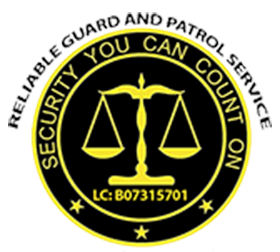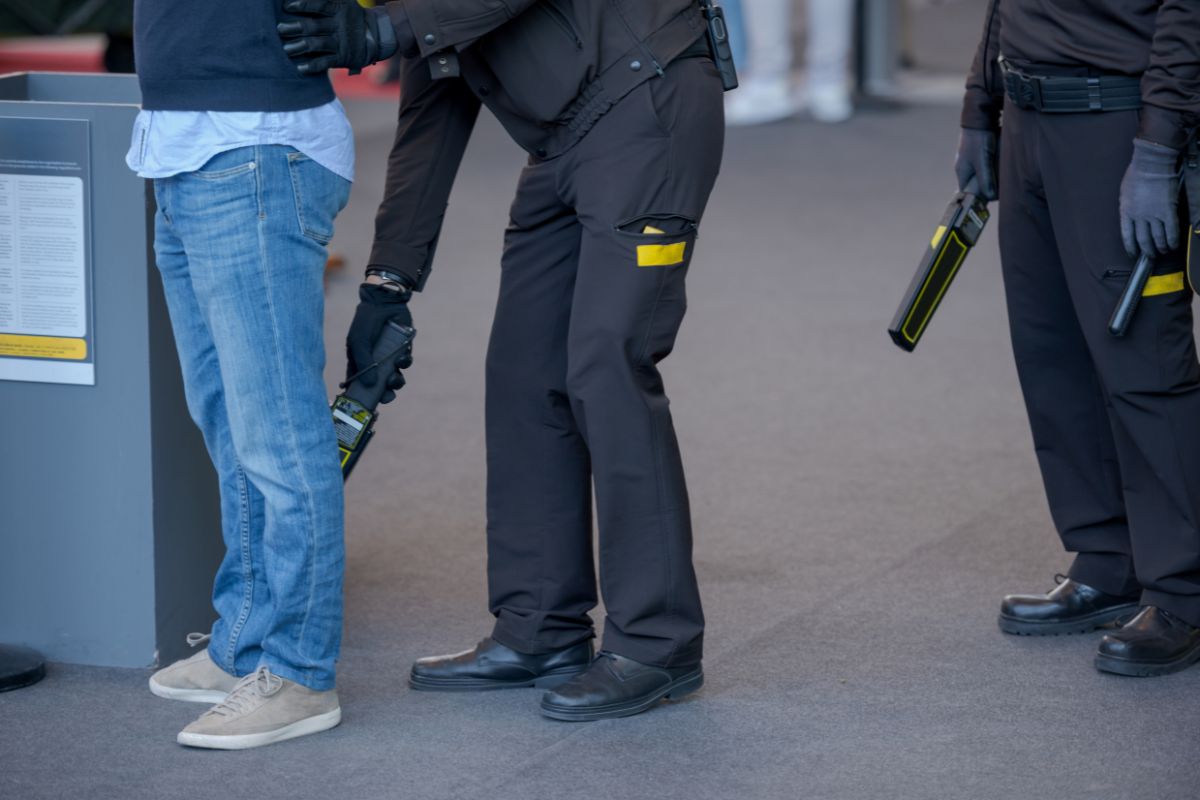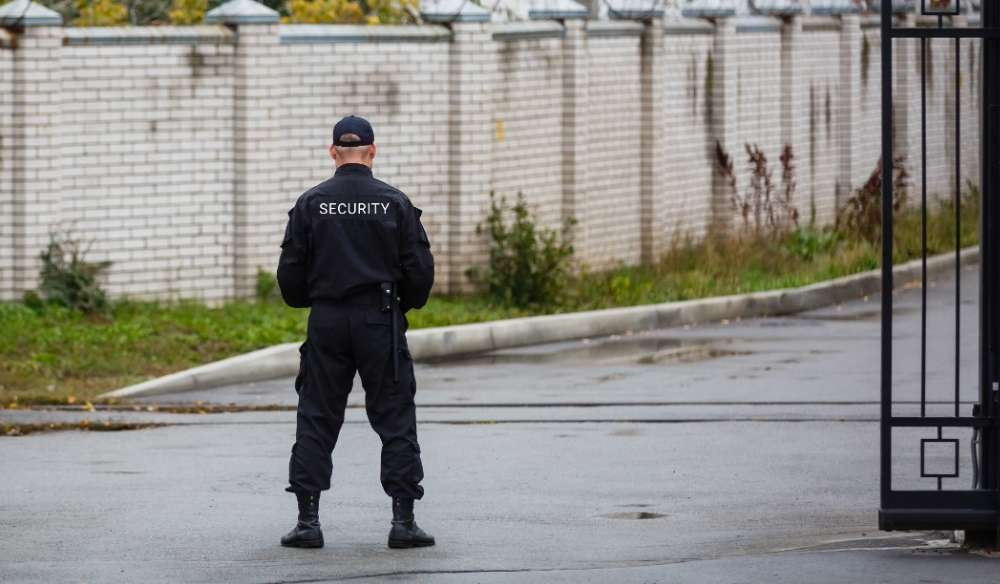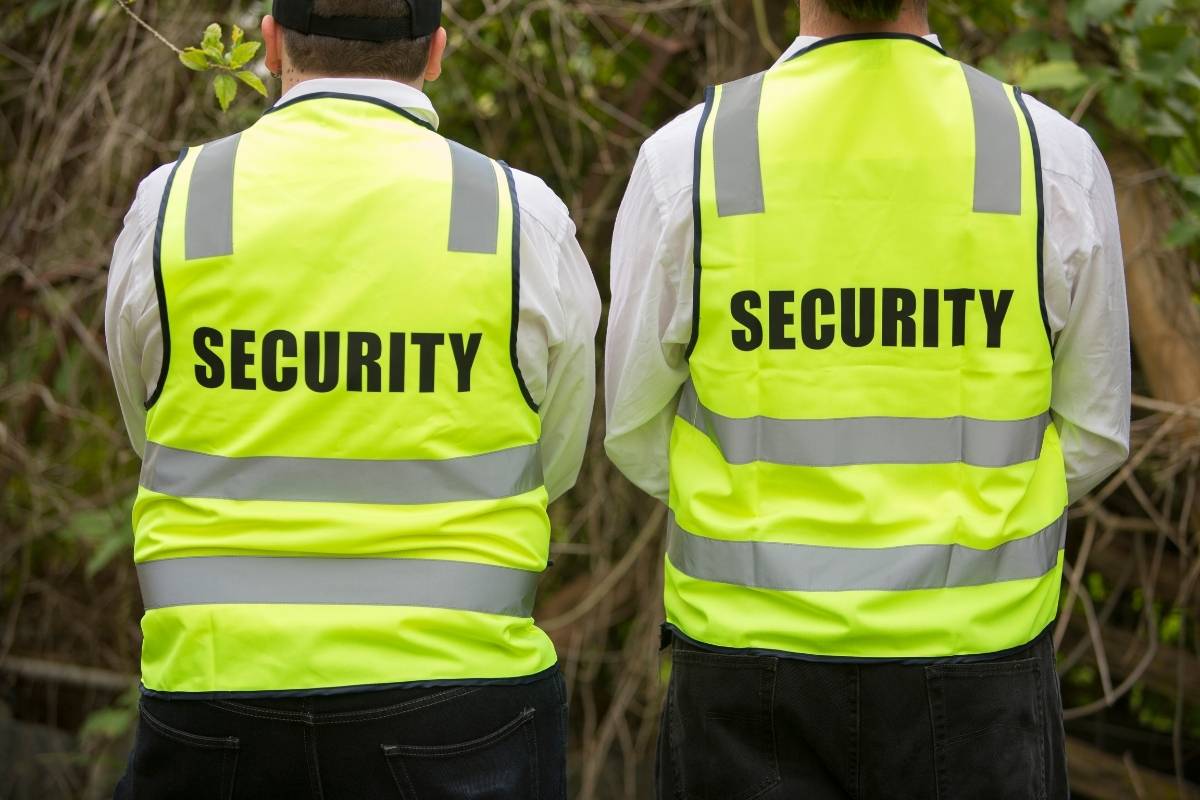
- Wed, Oct 2025
- |
- Reliable Houston Security Guard Service, Inc
Personal Protective Equipment (PPE) for security guards includes body armor, safety helmets, protective eyewear, cut-resistant gloves, steel-toe boots, and respiratory masks designed to protect against workplace hazards, including physical assaults, environmental dangers, and chemical exposure. Professional security guard services in Houston understand that proper protective equipment is fundamental to maintaining both officer safety and operational effectiveness in today’s challenging security environment.
Security guards require specialized protective equipment because they face unpredictable situations daily, from violent confrontations to hazardous material exposure. The right PPE reduces injury risk by up to 70% and ensures guards can perform effectively in emergency situations, as documented by OSHA safety standards.
Essential PPE Types for Security Personnel:
- Body protection: Bullet-resistant vests, stab-resistant armor, high-visibility clothing
- Head protection: Impact-resistant helmets, protective caps
- Eye protection: Safety glasses, chemical-resistant goggles
- Hand protection: Cut-resistant gloves, chemical-resistant gloves
- Foot protection: Steel-toe safety boots, slip-resistant footwear
- Respiratory protection: N95 masks, chemical respirators for hazardous environments
Key selection criteria: PPE must meet recognized safety standards (ANSI, NIJ), fit properly for 8-12 hour shifts, and match specific workplace hazards identified through risk assessment. Regular inspection and timely replacement ensure maximum protection effectiveness.
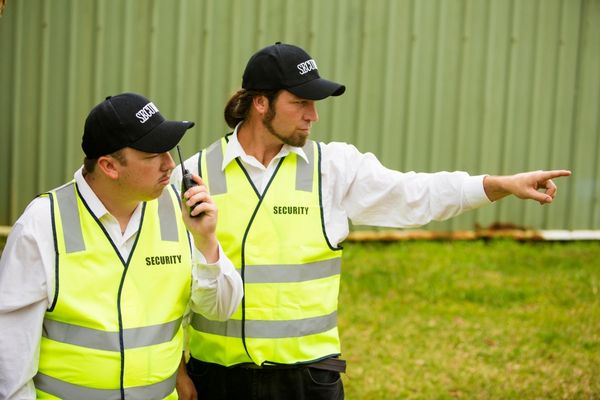
What Personal Protective Equipment Means for Security Guards
Personal Protective Equipment refers to gear designed to reduce exposure to hazards. For security guards, PPE includes clothing, gear, and devices that protect against injuries and illnesses. These range from basic items such as gloves to specialized armor and communication devices. PPE helps security guards perform their roles with greater safety and confidence. The American Society for Industrial Security (ASIS) emphasizes that proper protective equipment is essential for maintaining professional standards in the security industry.
Why PPE is Crucial for Security Guards
Security guards often face unpredictable situations. Threats may include physical assaults, environmental hazards, or exposure to hazardous materials. PPE reduces these risks and enables guards to stay effective in emergencies. Without proper PPE, even experienced security guards may suffer preventable injuries. Ensuring reliable protective equipment is therefore essential to maintaining both personal safety and operational performance. Armed security guard services particularly require comprehensive protective equipment due to the elevated-risk environments in which they operate.
Main Types of PPE for Security Guards
Security guards face diverse challenges in maintaining safety and order, making protective gear essential for their role. Personal protective equipment (PPE) helps ensure both security and resilience on the job. Understanding the main types of PPE provides insight into how these tools support guards in performing their duties effectively. The Security Industry Association provides comprehensive guidelines for selecting appropriate protective equipment across different security sectors.
Head Protection for Security Guards
Helmets protect against injuries caused by impacts, falling objects, or assaults. Lightweight helmets provide durability without causing discomfort during long shifts. Caps, while less protective, offer some defense and improve visibility for identification. Construction site security personnel particularly benefit from impact-resistant head protection due to the inherent hazards of construction environments.
Eye Protection for Security Guards
Security guards must often work in environments with dust, debris, or chemical risks. Safety glasses shield eyes from small hazards, while goggles provide full coverage. Proper fit is vital since loose or uncomfortable eyewear may reduce compliance. Event security services often require specialized eye protection to handle crowd control situations and outdoor environments with varying light conditions.
Body Protection for Security Guards
Body armor is critical in high-risk situations. Bullet-resistant vests and stab-resistant armor protect against violent attacks. High-visibility clothing ensures guards remain visible in dim or crowded areas, reducing risks from accidents. Choosing breathable materials prevents overheating during long patrols. Unarmed security guards also benefit from protective vests, particularly those designed for stab resistance and blunt force protection.
Hand Protection for Security Guards
Gloves protect hands from cuts, abrasions, and chemical contact. Security guards often handle sharp objects or hazardous materials, making gloves necessary. Different glove types provide varying levels of protection, from cut resistance to chemical shielding. Warehouse security services require specialized hand protection due to frequent handling of materials and equipment in industrial environments.
Foot Protection for Security Guards
Safety boots prevent injuries caused by slips, falls, or sharp objects. Sturdy boots with steel toe protection also guard against impacts. Comfortable insoles are important since guards spend long hours standing or patrolling. Shopping center security personnel benefit from slip-resistant footwear designed for extended walking on various floor surfaces.
Respiratory Protection for Security Guards
Masks protect security guards from inhaling harmful particles, fumes, or smoke. In certain environments, disposable masks may be sufficient. In higher-risk areas, advanced respirators provide better protection. Proper training ensures guards understand when respiratory gear is needed. The Department of Labor provides specific guidelines for respiratory protection in workplace environments.
Hearing Protection for Security Guards
Loud environments, such as event venues or industrial sites, expose guards to harmful noise levels. Earplugs and earmuffs protect against long-term hearing damage. Security guards must be trained to use hearing protection correctly without limiting awareness. Hotel security services may require hearing protection in venues with live music or high-volume entertainment areas.
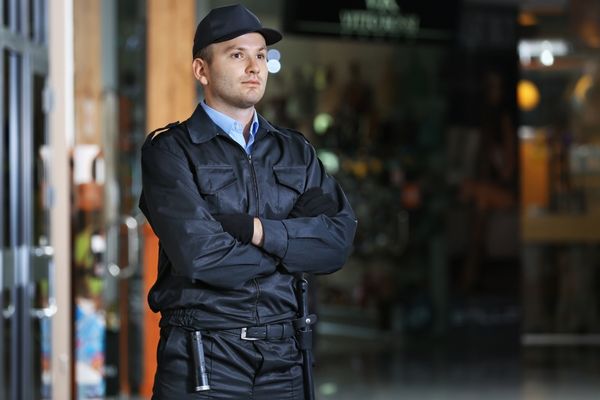
Choosing the Right PPE for Security Guards
Security guards face diverse challenges on duty, and their protection often begins with the right equipment. Personal protective equipment (PPE) plays a vital role in enhancing safety and ensuring preparedness for various situations. Choosing the proper gear sets the foundation for confidence, effectiveness, and resilience in the field.
Conducting Risk Assessments
Before issuing PPE, it is essential to identify potential hazards. Each security assignment involves different threats. Guards in high-crime areas may need armor, while those in industrial sites may require respiratory gear. A risk assessment ensures equipment matches the environment. Security officers in Pearland may face different risks compared to urban Houston assignments, requiring tailored protective equipment solutions.
Ensuring Proper Fit and Comfort
Ill-fitting PPE can be dangerous and discourage consistent use. Equipment must fit each security guard properly and remain comfortable during long shifts. Adjustable straps, padding, and lightweight materials improve usability. Professional security companies understand that comfort directly impacts compliance and effectiveness in protective equipment usage.
Verifying Quality and Standards
All PPE should meet recognized safety standards. Reliable certification ensures that the equipment provides real protection. Security guards depend on this guarantee, particularly in life-threatening scenarios. Security Magazine regularly publishes updates on industry standards and equipment certifications for protective gear.
Training in Proper Use
Providing PPE is not enough. Security guards need training to use, adjust, and maintain their equipment correctly. Training should cover emergency scenarios, routine checks, and how to recognize faulty gear. Provide comprehensive guidelines for workplace safety equipment usage and maintenance.
Maintaining PPE for Security Guards
Security guards play a vital role in ensuring safety, and their protective equipment is an essential part of the job. Introducing the importance of proper care, this piece highlights why maintaining PPE goes beyond compliance; it safeguards health, performance, and readiness in every challenging situation.
Regular Inspections
PPE must be checked for wear and damage before each shift. Small cracks, tears, or malfunctions can reduce effectiveness. Security guards should report issues immediately. Building security services implement systematic inspection protocols to ensure equipment reliability across all shifts.
Correct Storage
Storage conditions affect PPE performance. Equipment should be kept in clean, dry spaces. Avoiding extreme temperatures and moisture extends the lifespan of protective gear. Professional security companies maintain proper storage facilities to preserve equipment integrity and maximize service life.
Timely Replacement
Old or damaged PPE cannot provide reliable protection. Security managers must replace worn items promptly. Guards should never be asked to work with unsafe gear. Security officers in Sugar Land receive regular equipment updates to maintain optimal protection standards.
Best Practices for Security Guards Using PPE
Security guards must wear their PPE consistently, especially in high-risk areas. Equipment should always be used according to the manufacturer’s instructions. Reporting discomfort or malfunction is vital, as unreported issues may put guards at risk. Security Today provides ongoing coverage of best practices and emerging trends in security equipment usage.
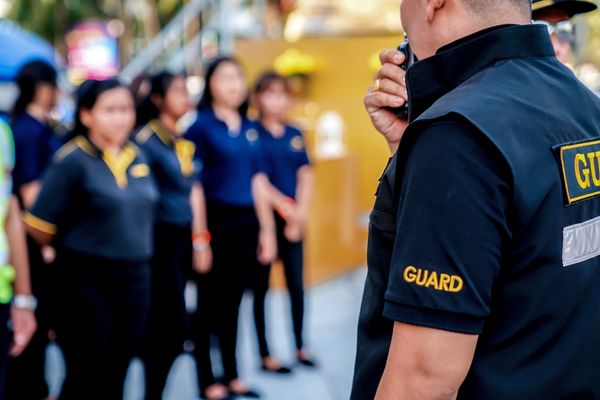
Additional Protective Tools for Security Guards
Beyond basic PPE, security guards often use advanced protective gear. This includes tactical flashlights, radios, and body cameras. These tools improve awareness, communication, and accountability. Each additional device enhances safety by giving guards greater control in emergencies. Comprehensive security services integrate traditional protective equipment with modern communication and monitoring technology.
Role of Training in Security Guard Safety
PPE is effective only when combined with training. Security guards need scenario-based exercises to practice responses. Training ensures guards know how to remain calm under pressure and use protective equipment effectively. Ongoing sessions reinforce skills and prepare guards for evolving threats. The Texas Department of Public Safety mandates specific training requirements for private security personnel, including proper equipment usage protocols.
Technology and PPE for Security Guards
Advances in technology continue to improve PPE. Lightweight materials make armor easier to wear. Smart helmets and communication devices integrate safety with modern tools. Technology enhances both comfort and effectiveness, making security guards better prepared for complex duties. ASIS certification programs incorporate training on emerging protective technologies and their practical applications.
Legal and Ethical Considerations
Security guards must comply with laws governing protective gear use. Employers have a duty to provide reliable PPE. Guards must also act ethically, balancing protective needs with professionalism. Clear policies help security guards understand their responsibilities while staying safe. Professional security companies work closely with regulatory agencies to ensure full compliance with safety standards.
Risk Awareness and Preparedness
Security guards should combine PPE with situational awareness. Protective gear reduces risks, but awareness prevents many incidents. Guards must learn to recognize suspicious behavior, unsafe environments, and potential hazards. Preparedness ensures quick and effective responses. Experienced security professionals understand that protective equipment serves as the last line of defense in a comprehensive safety strategy.
Physical Fitness and Safety
Protective equipment functions best when security guards maintain physical fitness. Good stamina, strength, and mobility help guards wear heavy gear effectively. Fitness programs support endurance and improve overall safety during demanding tasks. The U.S. Chamber of Commerce recognizes workplace wellness programs as essential components of comprehensive employee safety initiatives.
Psychological Safety for Security Guards
Protective equipment shields the body, but psychological safety is also important. Security guards face stress, confrontation, and pressure daily. Access to stress management techniques and support systems improves mental resilience. Mental preparedness enhances the effectiveness of PPE use. Companies providing comprehensive security services recognize the importance of supporting both physical and mental well-being for their personnel.
Conclusion
Personal protective equipment represents a critical investment in security guard safety and operational effectiveness. The right combination of body armor, protective gear, and safety equipment can reduce injury risk by up to 70%, enabling guards to perform confidently in unpredictable situations. Success depends on proper risk assessment, ensuring equipment meets recognized safety standards, and providing comprehensive training. Regular maintenance, timely replacement, and consistent use maximize protection effectiveness. As technology advances, PPE continues to evolve with lightweight materials and integrated communication systems. However, protective equipment must be combined with situational awareness, physical fitness, and psychological preparedness to create a comprehensive safety framework. Security organizations that prioritize quality PPE, proper training, and ongoing support demonstrate their commitment to guard welfare while maintaining operational excellence in an increasingly complex security environment. For professional security services that prioritize officer safety and equipment quality, contact our security experts to discuss your specific protective equipment needs and safety requirements, or read our about page.
FAQs
What are the most essential PPE items every security guard should have?
The core essentials include bullet-resistant or stab-resistant body armor, safety boots with steel toes, cut-resistant gloves, protective eyewear, and respiratory protection when needed. High-visibility clothing is also crucial for guards working in low-light conditions or high-traffic areas.
How often should security guard PPE be inspected and replaced?
PPE should be inspected before each shift for signs of wear, damage, or malfunction. Replacement schedules vary by equipment type, but body armor typically needs replacement every 5-7 years, while items like gloves and masks may need monthly or quarterly replacement depending on usage and condition.
Do employers have to provide PPE for security guards, or is it the guard’s responsibility?
Employers are legally required to provide necessary PPE at no cost to employees. This includes conducting risk assessments to determine what equipment is needed and ensuring it meets safety standards. Guards are responsible for proper use, care, and reporting any issues with their equipment.
Can security guards modify or customize their PPE for better comfort?
PPE should never be modified, as this can compromise its protective capabilities and void safety certifications. Instead, guards should work with supervisors to find properly fitting equipment or different approved models that offer better comfort while maintaining protection standards.
What training is required for security guards to use PPE effectively?
Guards need initial training covering proper use, adjustment, maintenance, and storage of each PPE item. Training should include scenario-based exercises, emergency procedures, and how to recognize faulty equipment. Regular refresher training ensures guards stay current with best practices and new equipment updates.
